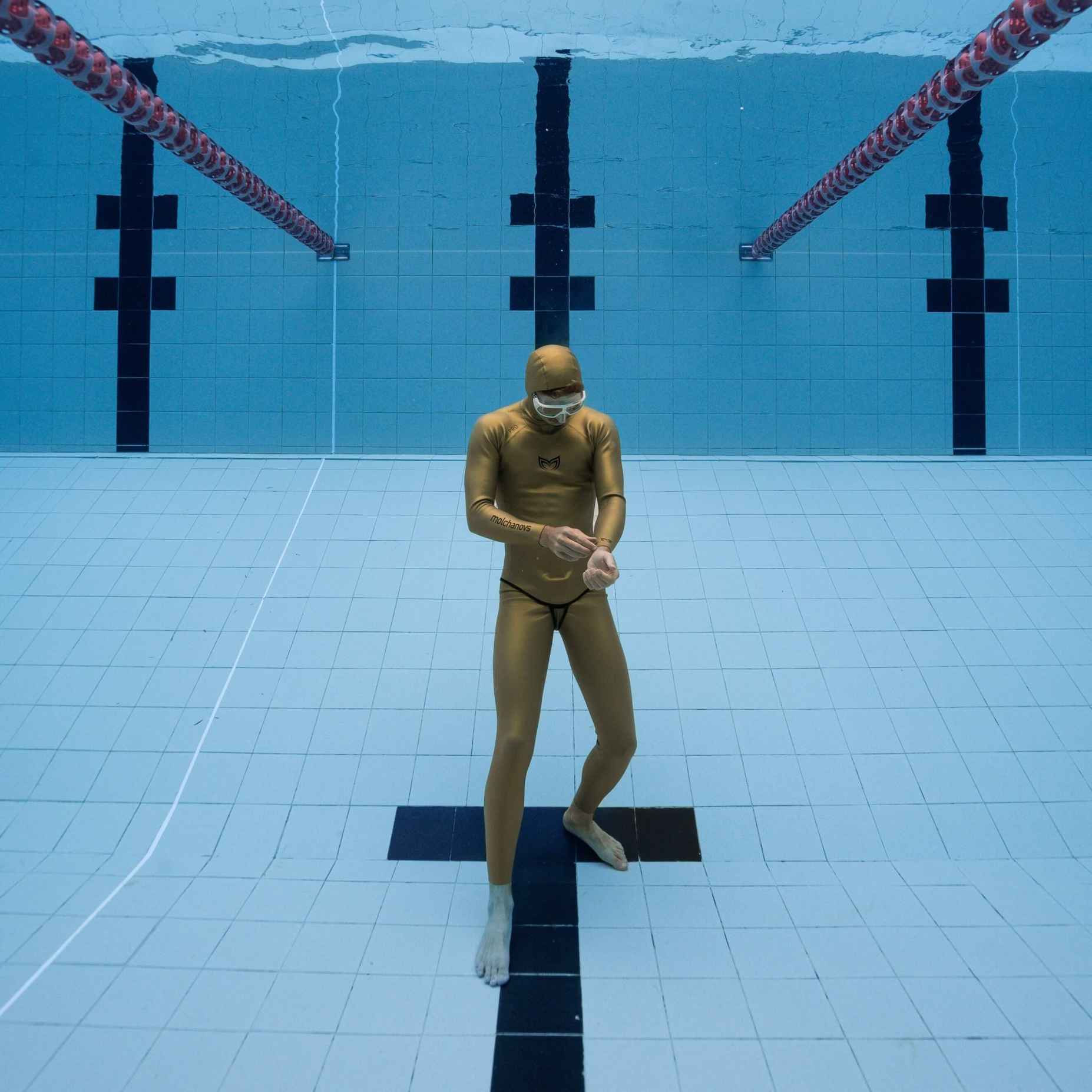Silicone Freediving Fins vs. Plastic Bifins
By Kristina Zvaritch
Freediving fins, also known to freedivers as bifins, are usually the first serious investment a beginner stores inside their gear bag. Since fiberglass and carbon fiber bifins are generally more expensive and fragile, many beginner freedivers purchase plastic bifins instead. Silicone freediving fins only recently became an option with the release of the Molchanovs CORE Silicone Bifins, as traditional silicone fins are too short to gain much distance compared to finning effort. With the launch of silicone freediving fins on the market, many freedivers are wondering whether they should buy plastic or silicone bifins, and what the differences are between them.
While plastic bifins have traditionally been a popular choice for freedivers as their first pair of bifins, silicone freediving fins, such as the CORE Silicone Bifins, are more useful for building proper flutter kick technique, are more durable and versatile, and are far easier to travel with than plastic fins. It is recommended to start out with silicone freediving fins as your first pair of bifins, and then later investing in a pair of fiberglass or carbon fiber bifins for more performance, while keeping the silicone freediving fins for refining technique.![]()
Picture credit: @ai_piraya 2
Technique
Building a strong foundation for technique should be the number one priority for beginners, as a good technique requires less energy, conserves more oxygen, is more efficient, and makes freediving safer. Currently, plastic fins on the market are limited in their stiffness, which is why more experienced freedivers prefer softer fiberglass or carbon fiber blades. Stiff blades paired with the extra length that is typical of freediving fins makes proper technique difficult to develop. 
One of the more popular techniques for bifins is the straight-leg technique, which involves smaller amplitude kicking from the hip with straight legs and minimal bending in the knee. This technique is practiced and mastered more easily with soft silicone fins, which also take less effort to maneuver, and then will translate to more power and efficiency with longer fins. The CORE Silicone Bifins are anatomically designed with arch support and an open heel to keep feet in the optimal position for finning, and are built for comfort, support, and stability. They are also useful for training monofin technique, as monofin swimmers often use short silicone fins to perfect their dolphin kick.
Durable
While plastic fins are more durable than fiberglass or carbon fiber fins, there is still a certain amount of care that needs to be taken with them. If you leave plastic bifins leaning against a wall, or lay them down in a way that the blade is not completely flat, the shape of the blade will warp, leaving it in a curved position. The foot pockets, whether they are made of rubber or plastic, will also retain the shape they are left in if placed in an obstructed position for too long.
Silicone freediving fins are considered virtually indestructible. They retain their original shape no matter which way they are stored due to the flexibility of the material, and the only consideration that needs to be taken (other than general care regarding rinsing them with fresh water after use and not leaving them in direct sunlight for long periods) is to keep sharp objects away from the open-heel foot strap. The CORE Silicone Bifins are even built to withstand temperatures of -30°C (-22°f) without deforming, making them ideal for all water temperatures, whether you are diving in tropical waters or frigid lakes. UV resistant silicone also adds years to the life of the CORE Silicone Bifins compared to plastic fins on the market.
Travel - Friendly
Traveling with long fins can be extremely inconvenient, whether they are plastic, fiberglass, or carbon fiber, as their lengthy proportions make it difficult to find specific bags or cases that can fit them properly. Packing them can also be a problem, as plastic blades should be packed with the blade laying flat, so that the material is not curved for long periods of time. Even strapping them to the outside of a backpack still leaves much of the blade hanging freely and liable to knock into things and make transit uncomfortable.
Silicone freediving fins are shorter, which means that they likely already fit into your current bag, and they do not need as much protection or care when traveling as plastic bifins require. Silicone freediving fins are also bendable and their shape will not be affected in the long-term by the way that you pack them. This means that you can easily stuff them into any bag and go, whether you are using a big suitcase for airplane travel or a smaller bag for a training session.
Versatility
While long freediving fins are often used solely for freediving, the CORE Silicone Bifins can also be used for other recreational water activities. Apart from being excellent for recreational diving, snorkeling at the surface is also more convenient with shorter fins, and they are easily packed into a beach bag to dive from shore or off of a boat. Scuba diving can also be uncomfortable with freediving fins as they are inefficient for the “frog kick,” therefore shorter silicone fins can also double as scuba diving fins on vacation. Having your own fins on diving vacations with water-centered activities helps you feel more secure and saves you on rental gear costs.![]()
Picture credit: @moreno_chronicles @nofinsfreediverph
Invest wisely in your freediving
Freediving bifins are much more important to freedivers than what meets the eye. Proper technique keeps freedivers from wasting too much energy to the point of significantly low oxygen levels. It is efficient technique that allows you dive deeper and further, whether you are diving on the line, in a pool, or performing safety for your freediving buddy. This is why Molchanovs created the CORE Silicone Bifins, making them and a perfect companion to a beginner freediver who is taking their first freediving course or to an experienced freediver looking to perfect their technique. Choose equipment that is designed with freedivers in mind, and invest wisely in your freediving future.

Picture credit: Daan ver Hoeven @daanverhoevenfreediver






Leave a comment